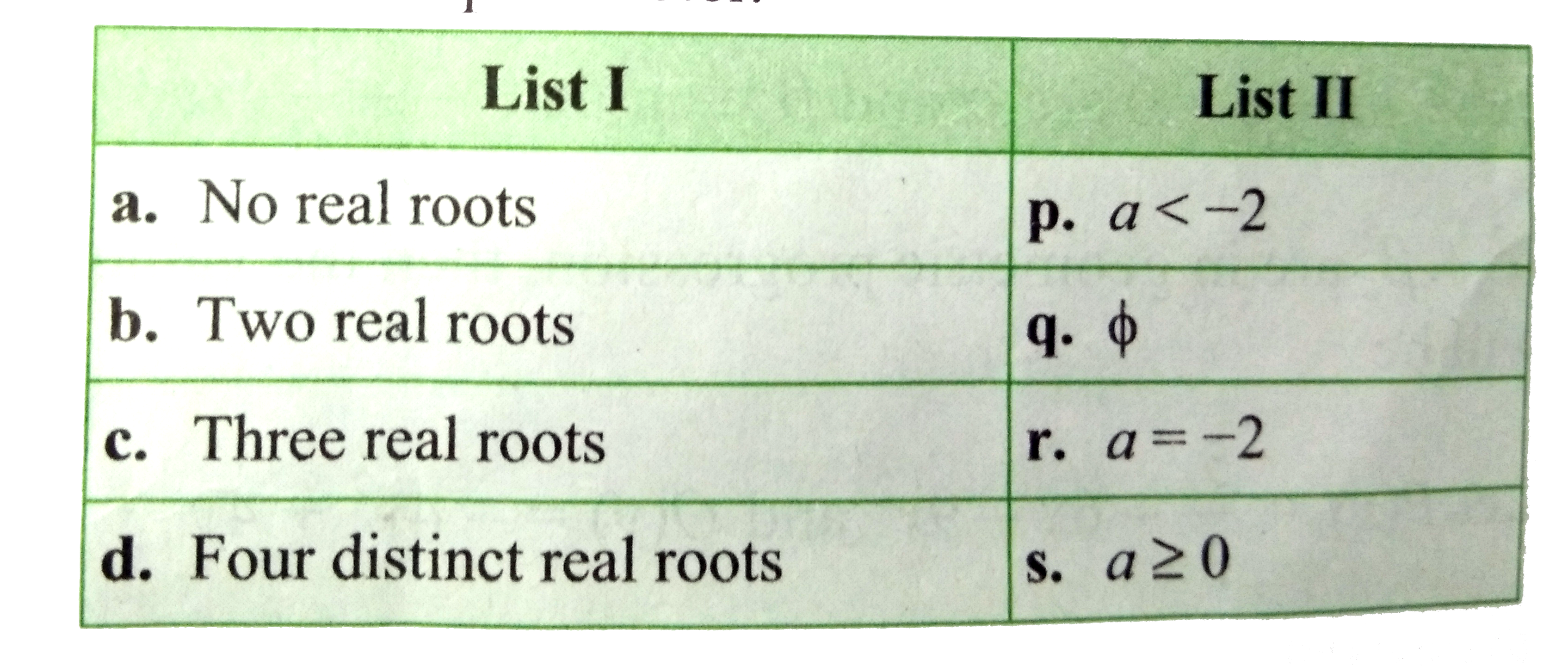(af(μ)<0) is the necessary and sufficient condition for a particular real number μ to lie between the roots of a quadratic equations f(x)=0, where f(x)=ax2+bx+c. Again if f(μ1)f(μ2)<0, then exactly one of the roots will lie between μ1 and μ2.
If a(a+b+c)<0<(a+b+c)c, then Solution in Tamil
one roots is less than 0, the other is greater than 1
one roots lies in (−∞,0) and other in (0,1)
both the roots lie in (0,1)
one roots lies in (0,1) and other in (1,∞)
The correct Answer is:2
f(0)f(1)<0andaf(1)>0
⇒f(0)f(1)<0andaf(0)<0
Hence, exctly one root lie in (0,1) and 0 lie between the roots.
Topper's Solved these Questions
- BOOK - CENGAGECHAPTER - THEORY OF EQUATIONSEXERCISE - Exercise (Matrix)6videos
THEORY OF EQUATIONS
- BOOK - CENGAGECHAPTER - THEORY OF EQUATIONSEXERCISE - Exercise (Numerical)43videos
THEORY OF EQUATIONS
- BOOK - CENGAGECHAPTER - THEORY OF EQUATIONSEXERCISE - Exercise (Multiple)38videos
THEORY OF EQUATIONS
- BOOK - CENGAGECHAPTER - STRAIGHT LINESEXERCISE - JEE Advanced Previous Year4videos
STRAIGHT LINES
- BOOK - CENGAGECHAPTER - THREE DIMENSIONAL GEOMETRYEXERCISE - Question Bank12videos
THREE DIMENSIONAL GEOMETRY
Similar Questions
Match the following for the equation x2+a|x|+1=0 where, a is a parameter.
 02:08View Solution
02:08View SolutionIf x=2+223+213, then the value of x3−6x2+6x is:
05:10View Solutionif c≠0 and the equation p2x=ax+c+bx−c has two equal roots, then p can be
01:59View Solutionabout to only mathematics
02:01View SolutionThe equation of the plane which has the property that the point Q(5,4,5) is the reflection of point P(1,2,3) through that plane, is ax+by+cz=d where a,b,c,d∈N. Find the least value of (a+b+c+d).
02:03View SolutionThe necessary and sufficient condition for which a fixed number d' lies between the roots of quadratic equation f(x)=ax^(2)+bx+c=0;(a,b,c in R), is f(d)<0
06:19View SolutionLet f(x)=ax2+bx+c, a≠0, a, b, c∈I. Suppose that f(1)=0, 50<f(7)<60 and 70<f(8)<80.
Number of integral values of x for which f(x)<0 isView SolutionStatement-1: Ifαandβ are real roots of the quadratic equations ax2+bx+c=0and−ax2+bx+c=0, then a2x2+bx+c=0 has a real root between αandβ
Statement-2: If f(x) is a real polynomial and x1,x2∈R such that f(x1)fx2<0, then f(x) = 0 has at leat one real root between x1andx2.06:30View Solution(af(μ)<0) is the necessary and sufficient condition for a particular real number μ to lie between the roots of a quadratic equations f(x)=0, where f(x)=ax2+bx+c. Again if f(μ1)f(μ2)<0, then exactly one of the roots will lie between μ1 and μ2.
If |b|>|a+c|, then03:58View Solution(af(μ)<0) is the necessary and sufficient condition for a particular real number μ to lie between the roots of a quadratic equations f(x)=0, where f(x)=ax2+bx+c. Again if f(μ1)f(μ2)<0, then exactly one of the roots will lie between μ1 and μ2.
If a(a+b+c)<0<(a+b+c)c, then03:29View SolutionIf 0<a<b<cand the roots α,β of the equation ax2+bx+c=0 are imaginary, then
03:01View SolutionSuppose 0<b<candf(x)=x2−bc2x−(b+c),x∈R, then f(x) cannot lie in
View SolutionLet f(x)=ax2+bx+c, a≠0, a, b, c∈I. Suppose that f(1)=0, 50<f(7)<60 and 70<f(8)<80.
Number of integral values of x for which f(x)<0 isView Solution(af(μ)<0) is the necessary and sufficient condition for a particular real number μ to lie between the roots of a quadratic equations f(x)=0, where f(x)=ax2+bx+c. Again if f(μ1)f(μ2)<0, then exactly one of the roots will lie between μ1 and μ2.
If |b|>|a+c|, then02:30View SolutionAn analytic balance has uncertainty in measurement equal to ±1mg. Then report the result in terms of percentage if the weight of a compound is
a. 1g b. 10g c. 100g04:49View Solutionक्या निश्चित संख्या 'd' के लिए समीकरण f(x)=ax2+bx+c=0,(a,b,c,∈R) के मूलों के मध्य स्थित होने के लिए आवश्यक एवं पर्याप्त प्रतिबन्ध f(d)<0 है |
03:26View Solution

